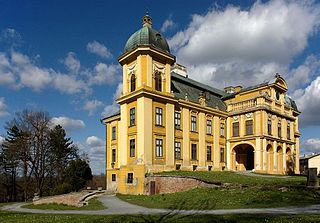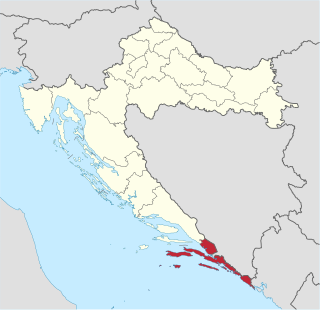
The demographic characteristics of the population of Croatia are known through censuses, normally conducted in ten-year intervals and analysed by various statistical bureaus since the 1850s. The Croatian Bureau of Statistics has performed this task since the 1990s. The latest census in Croatia was performed in April 2011. The permanent population of Croatia at the 2011 census had reached 4.29 million. The population density is 75.8 inhabitants per square kilometre, and the overall life expectancy in Croatia at birth was 78 years in 2012. The population rose steadily from 2.1 million in 1857 until 1991, when it peaked at 4.7 million. Since 1991, Croatia's death rate has continuously exceeded its birth rate; the natural growth rate of the population is negative. Croatia is in the fourth or fifth stage of the demographic transition. In terms of age structure, the population is dominated by the 15‑ to 64‑year‑old segment. The median age of the population is 41.4, and the gender ratio of the total population is 0.93 males per 1 female. The country is projected to lose 350,000 citizens by 2045.

Našice is a town in eastern Croatia, located on the northern slopes of the Krndija mountain in eastern Slavonia, 51 km southwest of regional hub Osijek. Administratively it belongs to Osijek-Baranja County.

Varaždin County is a county in northern Croatia. It is named after its county seat, the city of Varaždin.

Karlovac County is a county in central Croatia, with the administrative center in Karlovac.

Bjelovar-Bilogora County is a county in central Croatia.

Primorje-Gorski Kotar County is a county in western Croatia that includes the Bay of Kvarner, the surrounding Northern Croatian Littoral, and the mountainous region of Gorski kotar. Its center is Rijeka. The county's population was 315,000 in the 2018 census.

Lika-Senj County is a county in Croatia that includes most of the Lika region and some northern coastline of the Adriatic near the town of Senj, including the northern part of the Pag island. Its center is Gospić.

Šibenik-Knin County is a county in southern Croatia, located in the north-central part of Dalmatia. The biggest city in the county is Šibenik, which also serves as county seat. Other notable towns in the county are Knin, Drniš and Skradin.

Virovitica-Podravina County is a northern Slavonian county in Croatia. Its county seat is in Virovitica and it includes the area around the Drava river, hence the name Podravina. Other notable towns are Slatina and Orahovica.

Požega-Slavonia County is a Croatian county in western Slavonia. Its capital is Požega. Population: 78,034 .\

Split-Dalmatia County is the central-southern Dalmatian county in Croatia. The administrative center is Split. The population of the county is 455,242 (2011). The land area is 4540 km2.

Brod-Posavina County is the southern Slavonian county in Croatia. Its center is the city of Slavonski Brod and it spreads along the left bank of the Sava river, hence the name Posavina. Other notable towns include Nova Gradiška.

The Dubrovnik-Neretva County is the southernmost Croatian county, located in south Dalmatia. The county seat is Dubrovnik and other large towns are Korčula, Metković, Opuzen and Ploče. The Municipality of Neum, which belongs to neighbouring Bosnia and Herzegovina, divides the county in two parts.

Ploče is a town and a notable seaport in the Dubrovnik-Neretva County of Croatia.

Donji Miholjac is a town and municipality in the Slavonia region of Croatia, on the river Drava and the border with Hungary.

Pakrac is a town in western Slavonia, Croatia, population 4,842, total municipality population 8,460. Pakrac is located on the road and railroad connecting the regions of Posavina and Podravina.

Loznica is a city located in the Mačva District of western Serbia. It lies on the right bank of the Drina river. In 2011 the city had a total population of 19,572, while the administrative area had a population of 79,327.

Filipovići is a village in the municipality of Loznica, Serbia. According to the 2002 census, the village has a population of 177 people.




















